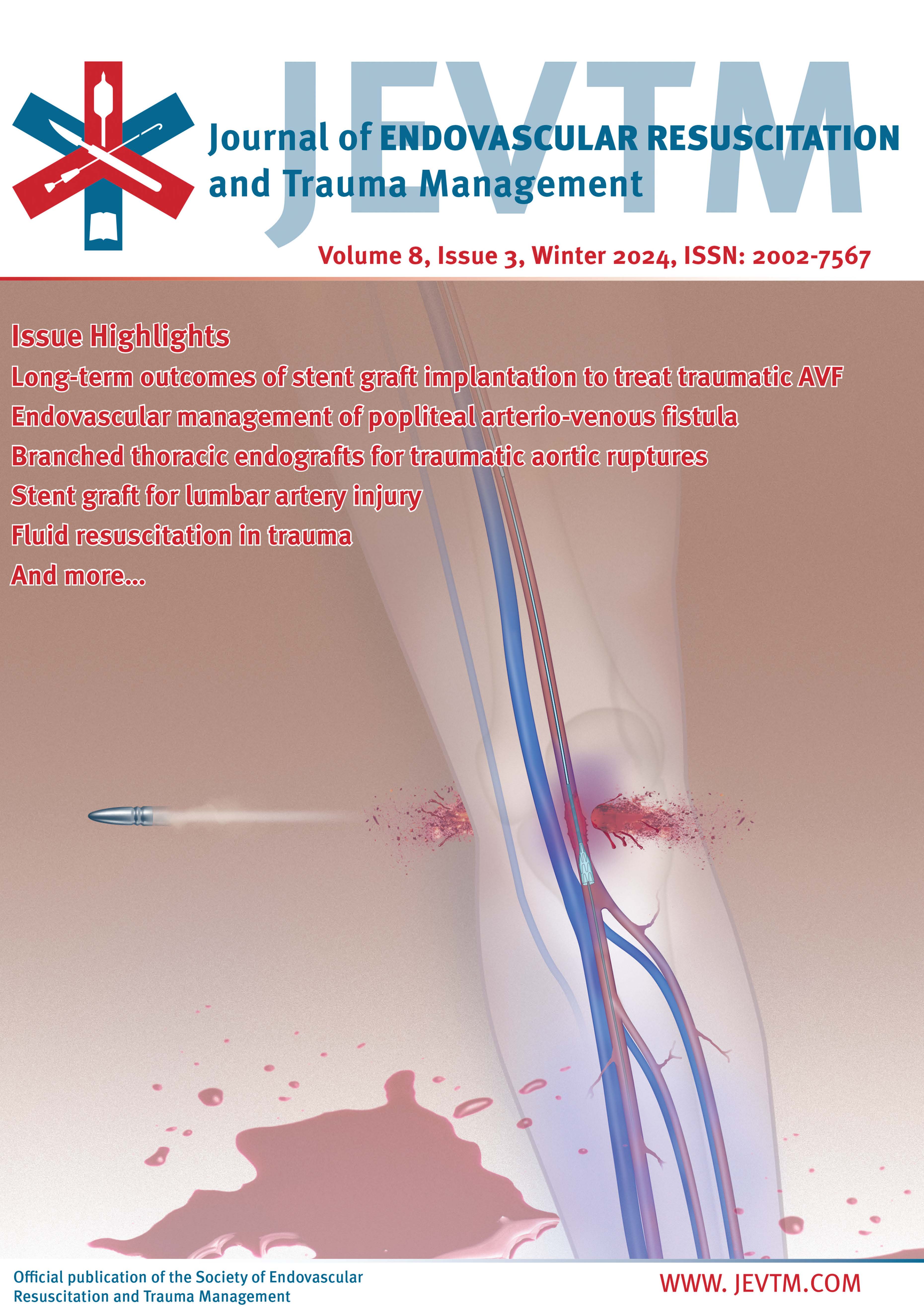Use of Resuscitative Endovascular Balloon Occlusion of the Aorta (REBOA) in Trauma Patients in French Level-1 Trauma Centers: A National Survey
DOI:
https://doi.org/10.26676/jevtm.34828Keywords:
Anesthesiologist, Aortic Occlusion, Bleeding Control, Hemorrhagic Shock, Trauma ManagementAbstract
Background: The goal of the present national survey was to describe the practices and use of resuscitative endovascular balloon occlusion of the aorta (REBOA) in France in level-1 trauma centers.
Methods: Between January and December 2023, the ACUTE SFAR (Société Française d’Anesthésie et de Réanimation) committee sent a numeric survey to each French level-1 trauma center. This survey was focused on REBOA in trauma management including: use, protocol (indications, placement, aortic occlusion durations), aortic occlusion location (Zone 1/Zone 3), partial occlusion (pREBOA), device characteristics, operator, specific complications.
Results: Among the 41 French level-1 trauma centers, 18 (44%) had incorporated REBOA in their algorithm. In 2022, 78% (14/18) of these centers had experienced between 1 and 5 REBOA placements, 11% (2/18) between 6 and 10, and 6% (1/18) 10 or more placements. The frequency of REBOA procedures increased with the duration of REBOA availability at the center. A protocol for REBOA placement was present in 28% (5/18) of centers. An anesthesiologistintensivist was the operator in 50% (9/18), a surgeon in 28% (5/18), and a radiologist in 22% (4/18) of centers. The proportion of centers using REBOA in Zone 1 was 39% (7/18), and pREBOA 33% (6/18). The maximum duration of complete aortic occlusion was specified in 50% of centers for Zone 1 and 78% for Zone 3.
Conclusions: Use of REBOA is modestly spread among the French trauma centers, and in less than half of centers. Specific protocols are present. Anesthesiologist-intensivists are the operators in only half of these centers.
Downloads
Additional Files
Published
How to Cite
Issue
Section
License
Copyright (c) 2025 Pauline Glasman, Thomas Clavier, Hervé Quintard, Jonathan Charbit

This work is licensed under a Creative Commons Attribution 4.0 International License.
Authors of content published in the JEVTM retain the copyright to their works.
Articles in the JEVTM are published under the terms of a Creative Commons CC BY 4.0 license, which permits use, downloading, distribution, linking to and reproduction in any medium, provided the original work is properly cited.




